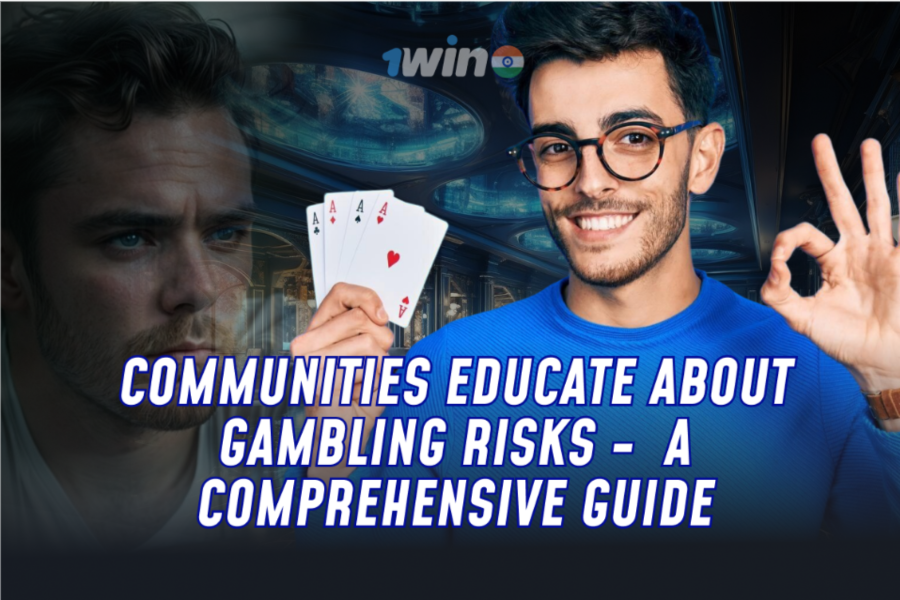Community education plays a vital role in addressing gambling risks and promoting responsible gambling practices. This guide outlines key strategies for informing the public about potential harms associated with excessive gambling. It covers prevention methods, support resources, and policy approaches. According to recent studies, approximately 1% of adults meet the criteria for severe gambling problems, highlighting the importance of widespread awareness efforts. By fostering informed communities, we can work towards minimizing gambling-related harm and supporting those affected.
Understanding Problem Gambling
Problem gambling, also known as gambling addiction, occurs when betting behaviors — whether through traditional means or platforms like 1win bet — interfere significantly with daily life. This disorder can negatively impact relationships, work performance, and personal well-being. Problem gambling often has underlying causes, including mental health issues. The following sections will examine the risks and consequences associated with this condition.
Definition and DSM-5 Criteria
The DSM-5 outlines specific criteria for diagnosing gambling disorder. These criteria serve as gambling signs that professionals use to assess the severity of the condition. A diagnosis requires meeting at least four of the following nine criteria over a 12-month period:
| Criterion | Description | Severity |
| 1 | Needs increasing amounts of money to gamble | |
| 2 | Restless when trying to stop gambling | |
| 3 | Repeated failed attempts to control gambling | |
| 4 | Preoccupied with gambling thoughts | |
| 5 | Gamble when feeling distressed | |
| 6 | Returns to recover gambling losses | |
| 7 | Lies about gambling involvement | |
| 8 | Jeopardized relationships or opportunities | |
| 9 | Relies on others for gambling-related financial help |
Prevalence of Problem Gambling
Problem gambling rates vary globally and locally, with concerning trends in India. Studies reveal the growing impact of gambling harm on individuals and communities.
- A 2017 Kerala high school study found that 27.9% of students had gambled, and 7.1% were classified as problem gamblers.
- Approximately 50% of 1,514 men surveyed in Goa reported gambling in the past year.
- 19.5% of students in a South Indian college engaged in gambling, with 33% of those classified as problem gamblers.
- Higher rates are associated with males, academic issues, substance abuse, and mental health concerns.
- Globally, problem gambling prevalence is estimated at 1-2%, though rates fluctuate significantly across regions.
Risk Factors for Gambling Addiction
Various factors contribute to the development of gambling addiction. The following table outlines key risk factors across demographic, psychological, and environmental categories, incorporating gambling risks:
| Category | Risk Factors | Explanation |
| Demographic | Young adults, males | 18-24-year-old men show higher rates of problem gambling |
| Psychological | Mental health issues | Depression and anxiety linked to increased gambling risks |
| Environmental | Easy access to betting | Proximity to casinos or online platforms can fuel addiction |
Consequences of Problem Gambling
Problem gambling can lead to severe repercussions across various aspects of life. The impacts of gambling addiction extend beyond the individual, affecting families and society at large. Here’s a comprehensive list of consequences:
- Financial difficulties, including debt and bankruptcy
- Mental health issues such as depression and anxiety
- Strained or broken family relationships
- Decreased work productivity
- Increased crime rates, including fraud and theft
- Physical health problems, like cardiovascular issues
- Social isolation and loss of friendships
- Substance abuse and addiction comorbidity
- Homelessness due to financial instability
- Increased healthcare costs for communities
Community-Based Education Strategies
Community-based education strategies play a crucial role in gambling education and awareness. A three-tiered prevention approach includes:
- Primary: Broad public campaigns and youth programs to boost community awareness
- Secondary: Early interventions for at-risk individuals
- Tertiary: Support and treatment for those struggling with gambling addiction
Primary Prevention Methods
Primary prevention aims to stop gambling problems before they start. Effective strategies include:
- Public awareness campaigns highlighting gambling prevention and responsible gambling practices
- Policy advocacy for stricter regulations on gambling advertising and promotions
- Youth education programs in schools teach about gambling risks
- Community-based initiatives to foster open dialogue about gambling concerns
- Training for healthcare providers to recognize early signs of problem gambling
Secondary Prevention Techniques
Effective gambling prevention strategies target at-risk and problem gamblers through secondary intervention methods. The following table outlines key techniques for responsible gambling initiatives:
| Technique | Target Audience | Description |
| Staff Training | Gambling Venue Employees | Equip staff to identify and assist potential problem gamblers |
| Early Screening | Healthcare Workers | Use tools to detect gambling issues early and offer support |
| Self-Exclusion | At-Risk Gamblers | Promote options for gamblers to limit their own access |
Tertiary Prevention and Support
Tertiary prevention and support methods aim to assist individuals experiencing gambling-related harm. These approaches include:
- Specialized treatment options offering evidence-based gambling counseling and therapy
- Family support services providing guidance for those affected by a loved one’s gambling
- Financial counseling to address debt and budgeting concerns
- Legal aid for gambling-related issues
- Vocational rehabilitation for employment assistance
- Housing support services
- Peer support groups like Gamblers Anonymous
- Medication options to manage gambling urges
- Self-exclusion programs from gambling venues
- Crisis helplines for immediate gambling support and intervention
Implementing Effective Gambling Education Programs
Key components of effective gambling education programs include legal reforms, research initiatives, national strategy development, and stakeholder collaboration. These areas focus on improving regulations, studying intervention effectiveness, setting clear objectives, and fostering partnerships to address gambling-related issues comprehensively.
Legal and Policy Reforms
Potential legal and policy reforms to address gambling-related issues:
- Advertising restrictions: Limit gambling advertisements to reduce exposure, especially for vulnerable populations.
- Mandatory loss limits: Implement laws requiring gamblers to set maximum loss thresholds before playing.
- Enhanced age verification: Strengthen identity checks to prevent underage gambling more effectively.
- Increased taxation: Raise taxes on gambling revenues to fund responsible gambling initiatives and treatment programs.
- Stricter licensing: Impose more rigorous requirements for gambling operators to promote responsible gambling practices.
- Data protection regulations: Enhance laws to protect gamblers’ personal and financial information from misuse.
Taking Action: How You Can Help
Individuals can contribute to gambling education and awareness efforts in several ways:
- Support educational programs about responsible gambling in schools
- Collaborate with organizations providing gambling prevention resources
- Participate in community awareness campaigns
- Share factual information about gambling risks and responsible habits
- Volunteer for evidence-based gambling education initiatives
You can also read: Betting Exchanges Popularity in India







